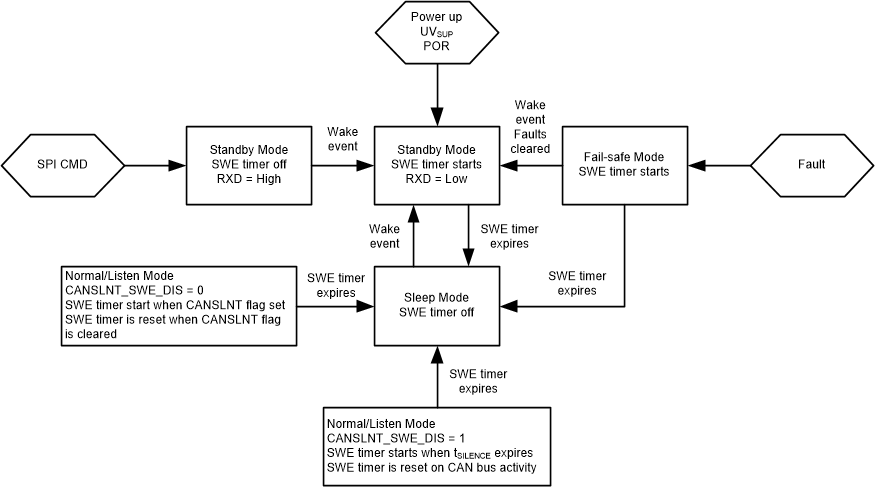SLLA475 December 2020 TCAN1144-Q1 , TCAN1146-Q1
- 1TCAN1144-Q1 and TCAN1146-Q1 Functional Safety Manual
- 2Trademarks
- 3Introduction
- 4TCAN114x-Q1 Hardware Component Functional Safety Capability
- 5Development Process for Management of Systematic Faults
- 6TCAN1144-Q1 and TCAN1146-Q1 Component Overview
- 7Description of Hardware Component Parts
- 8TCAN1144-Q1 and TCAN1146-Q1 Management of Random Faults
8.3.3.4 SM-11: Sleep Wake Error Timer; tINACTIVE
The device wakes up if the CAN bus provides a WUP or a local wake event takes place thus entering standby mode. Once in standby mode, the tSILENCE and tINACTIVE timers start. If the tINACTIVE expires the device re-enters sleep mode. When the device receives a CANINT, and LWU or FRAME_OVF such that the device leaves sleep mode and enters standby mode, the processor has tINACTIVE to clear the flags and place it into normal mode. If this does not happen, the device enters sleep mode. When in standby, normal or listen mode and the CANSLNT flag persists for tINACTIVE, the device enters sleep mode. Examples of events that could create this are the processor is no longer working and not able to exercise the SPI bus, or a go to sleep command comes in and the processor is not able to receive it or is not able to respond. See data sheet.
When fail-safe mode (FSM) is enabled and the SWE timer expires the device will enter FSM and will indicate the fault at 8'h50[7], 8'h50[4] and 8'h53[5] = FSM.
Figure 8-3 shows when the SWE timer, tINACTIVE, starts and what mode transitions take place.
 Figure 8-3 Sleep Wake Error (SWE) Timer, tINACTIVE
Figure 8-3 Sleep Wake Error (SWE) Timer, tINACTIVE